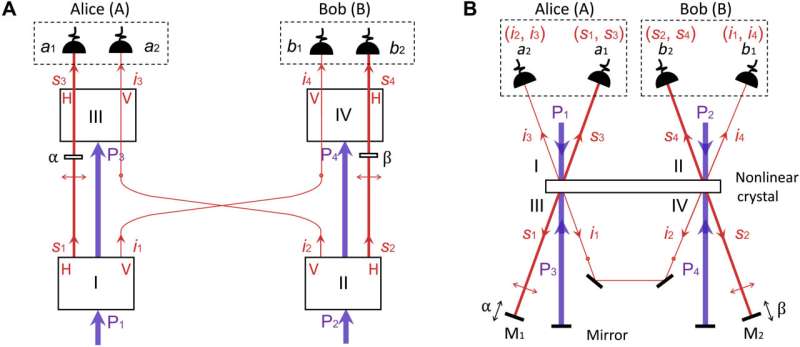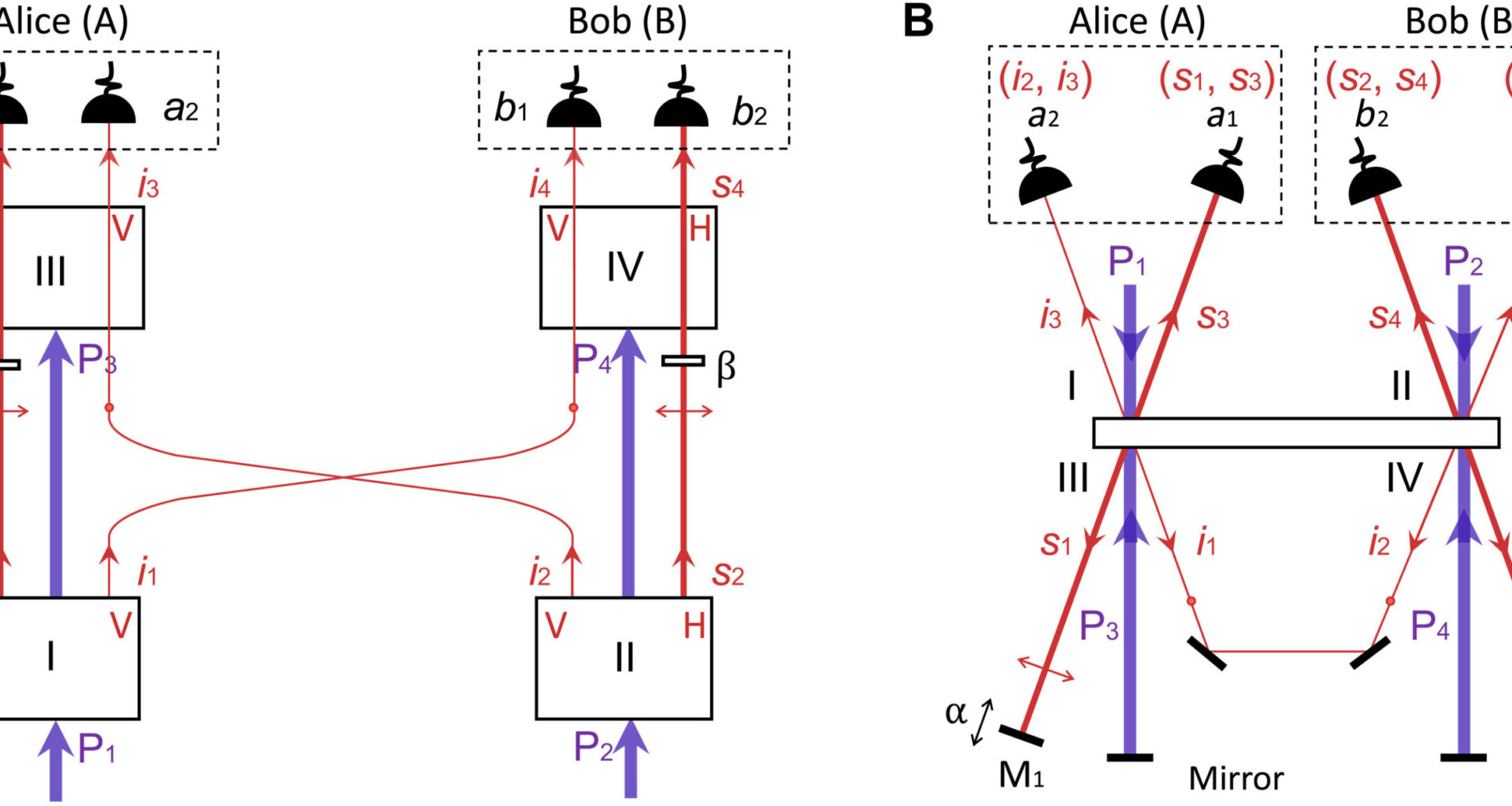
Four-photon FI. Credit: Science Advances (2025). DOI: 10.1126/sciadv.adr1794
In the everyday world that humans experience, objects behave in a predictable way, explained by classical physics. One of the important aspects of classical physics is that nothing travels faster than the speed of light. Even information is subject to this rule. However, in the 1930s, scientists discovered that very small particles abide by some very different rules. One of the more mind-boggling behaviors exhibited by these particles was quantum entanglement—which Albert Einstein termed “spooky action at a distance.”
In quantum entanglement, two particles can become entangled—meaning their properties are correlated with each other and measuring these properties will always give you opposite results (i.e., if one is oriented up, the other must be down). The strange part is that you still get correlated measurements instantaneously, even if these particles are very far away from each other.
If information cannot travel faster than the speed of light, then there should not be a way for one particle to immediately know the state of the other. This “spooky” quantum property is referred to as “nonlocality”—exhibiting effects that should not be possible at large distances in classical mechanics.
Up until recently, it was thought that only entangled particles could exhibit this nonlocality. But a new study, published in Science Advances, has used Bell’s inequality to test whether nonlocal quantum correlations can arise from other non-entanglement quantum features.
The experiment used photons generated by laser light hitting a particular type of crystal in such a way that it is impossible to determine their source. The setup ensures that the photons cannot become entangled before their detection at two separate detectors. The researchers used Bell’s inequality to determine if the experiment resulted in violations of local realism.

Four-photon-coincidence count of different phase settings 𝜶 and β. Credit: Science Advances (2025). DOI: 10.1126/sciadv.adr1794
According to their calculations, the experiment resulted in a violation of the Bell inequality, exceeding the threshold by more than four standard deviations. This kind of violation using unentangled photons had not been seen before. The researchers say these violations of Bell’s inequality arise from a property called quantum indistinguishability by path identity, instead of entanglement.
“Our work establishes a connection between quantum correlation and quantum indistinguishability, providing insights into the fundamental origin of the counterintuitive characteristics observed in quantum physics,” the study authors write.
While this work might be groundbreaking, there are still some possible issues that need to be ironed out in future studies. For example, the experiment relies on post selection—where only certain photons are detected, possibly giving misleading results.
Another possible issue comes from a locality loophole due to the phase settings of the detectors not being separated properly. However, the study authors are aware of this study’s limitations and are eager to find fixes to these issues and try again.
They end by saying, “We not only expect that tailored loopholes and local hidden variable to the work reported here can be identified, but also expect that they will be consistently excluded by hardware improvements of high-quality quantum photonic devices and experiments, as we witnessed in the 90-year endeavor in the violations of local realism with entangled particles.
“Moreover, our work could very well lead to other interesting experiments, such as in the development of the Bell experiment. In analogy to the Bell experiment with two particles, we expect that quantum mechanics will lastly prevail.”
Written for you by our author Krystal Kasal, edited by Gaby Clark, and fact-checked and reviewed by Robert Egan—this article is the result of careful human work. We rely on readers like you to keep independent science journalism alive.
If this reporting matters to you,
please consider a donation (especially monthly).
You’ll get an ad-free account as a thank-you.
More information:
Kai Wang et al, Violation of Bell inequality with unentangled photons, Science Advances (2025). DOI: 10.1126/sciadv.adr1794
© 2025 Science X Network
Citation:
Scientists produce quantum entanglement-like results without entangled particles in new experiment (2025, August 4)
retrieved 4 August 2025
from https://phys.org/news/2025-08-scientists-quantum-entanglement-results-entangled.html
This document is subject to copyright. Apart from any fair dealing for the purpose of private study or research, no
part may be reproduced without the written permission. The content is provided for information purposes only.

